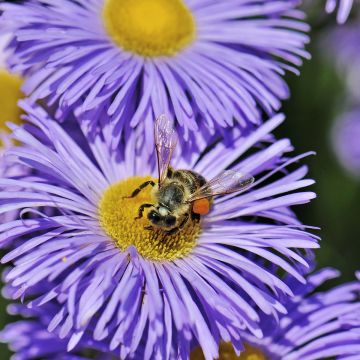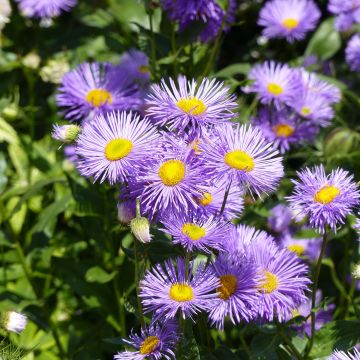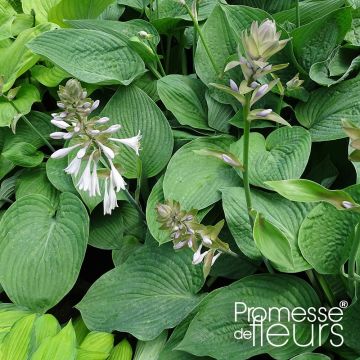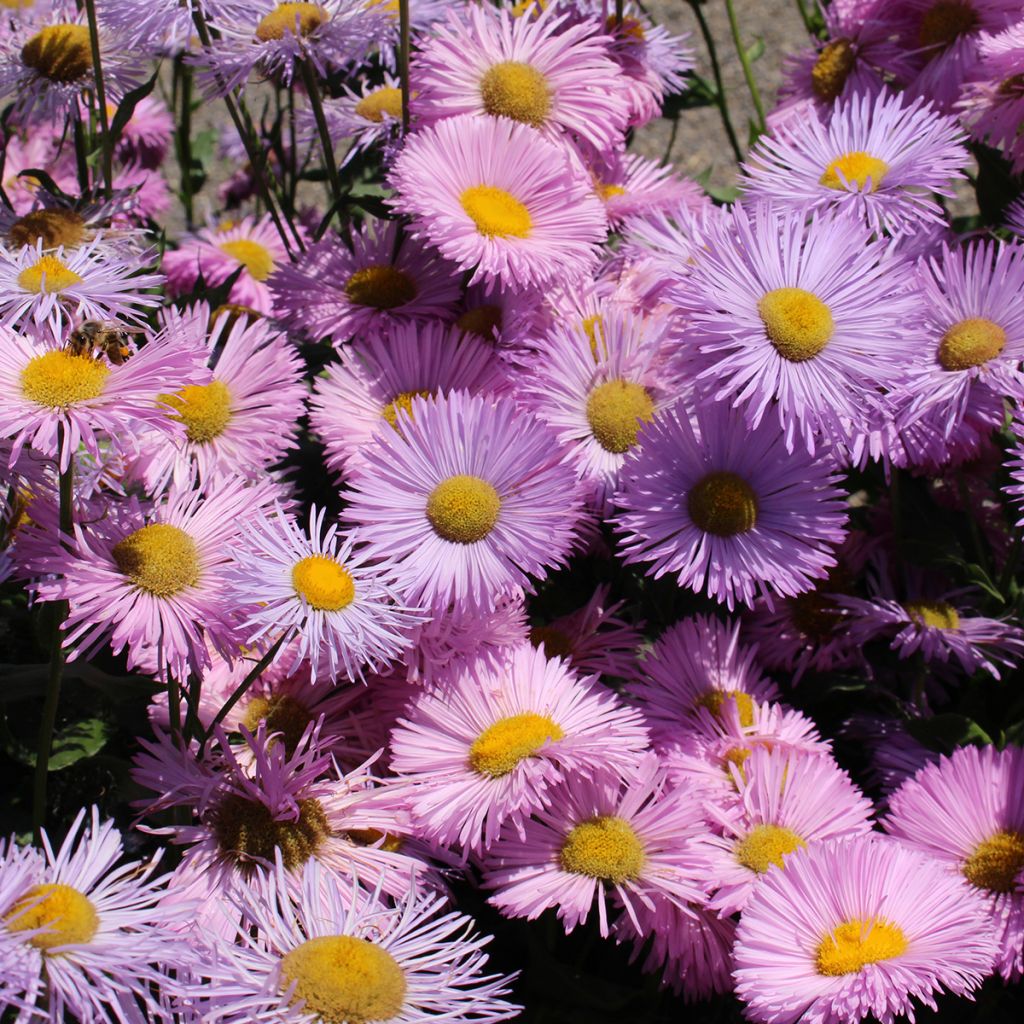

Erigeron speciosus Rosa Jewel
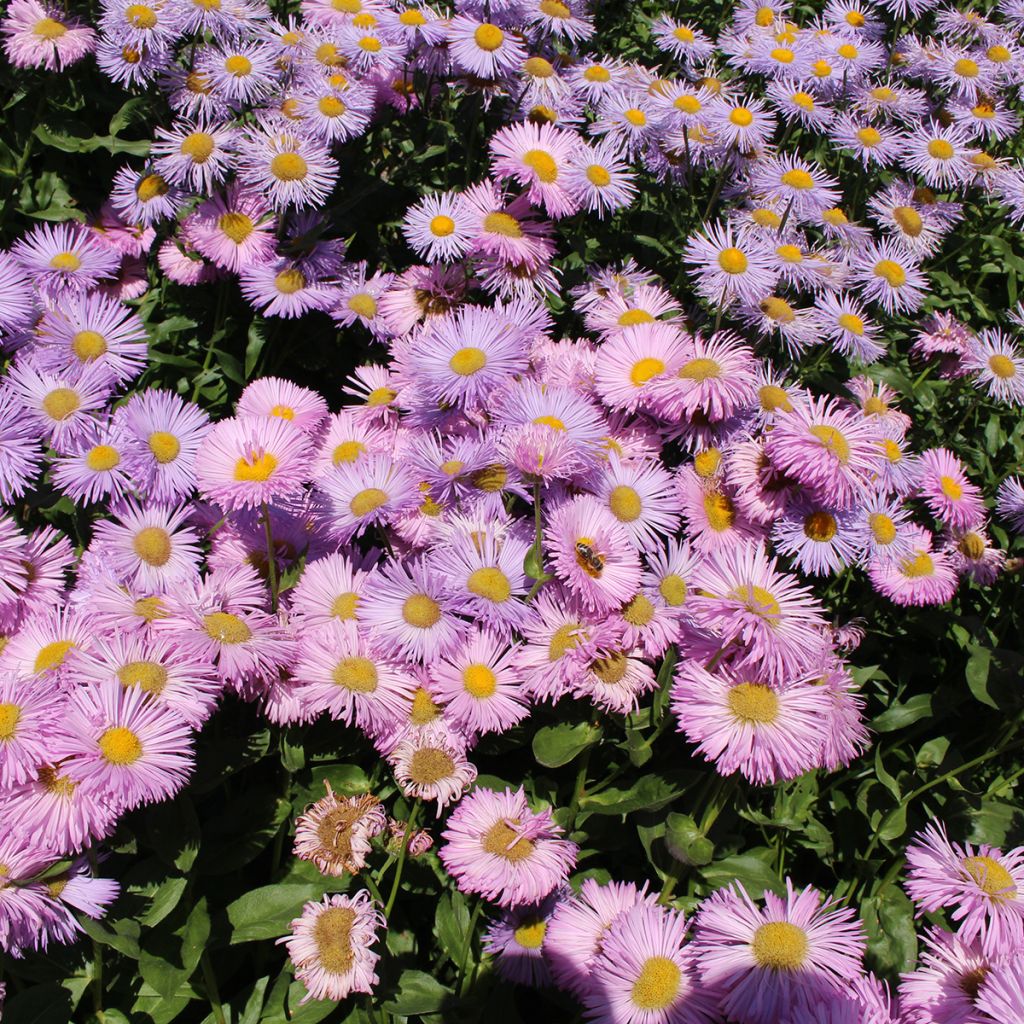

Erigeron speciosus Rosa Jewel


Erigeron speciosus Rosa Jewel


Erigeron speciosus Rosa Jewel


Erigeron speciosus Rosa Jewel
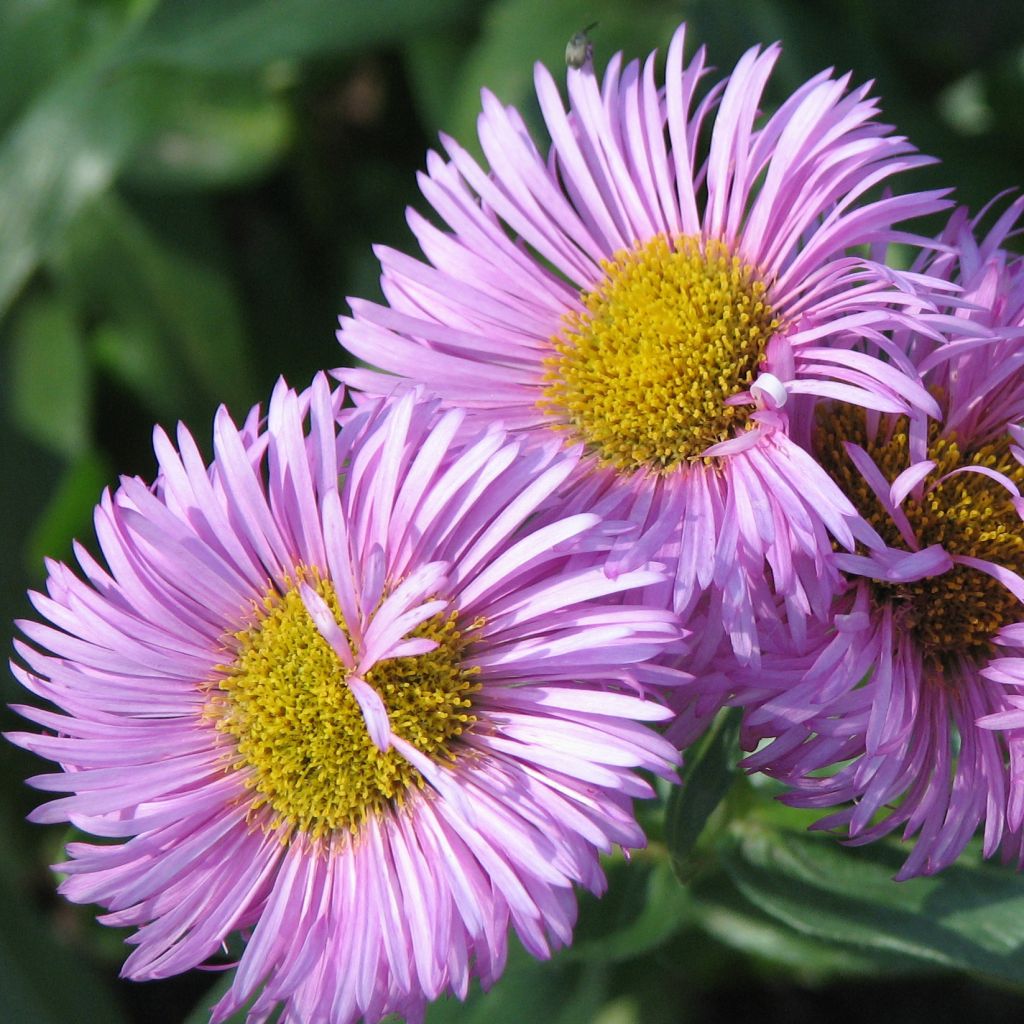

Erigeron speciosus Rosa Jewel


Erigeron speciosus Rosa Jewel
Erigeron speciosus Rosa Jewel
Erigeron speciosus Rosa Jewel
Fleabane
Lovely young plant, already grown, ready to bloom.
Agnès, 28/05/2023
This item cannot be shipped to the selected country
Delivery charge from €5.90
Delivery to Corse prohibited
More information
Schedule delivery date,
and select date in basket
This plant carries a 12 months recovery warranty
More information
We guarantee the quality of our plants for a full growing cycle, and will replace at our expense any plant that fails to recover under normal climatic and planting conditions.
From €5.90 for pickup delivery and €6.90 for home delivery
Express home delivery from €8.90.
Delivery to Corse prohibited: UE law prohibits the import of this plant from mainland France to Corse as part of the fight against Xylella fastidiosa. Please accept our sincere apologies.
More information
Does this plant fit my garden?
Set up your Plantfit profile →
Description
Erigeron speciosus 'Rosa Jewel', also known as E. 'Rosa Juwel', is a perennial with a very delicate colour. Its numerous semi-double flowers are pink with a yellow heart and bloom from June to August, attracting pollinators and bringing life to the garden. Perfect for romantic or wild atmospheres, it is suitable for every garden as it tolerates all types of soil, even limestone.
Belonging to the Asteraceae family and resembling asters, this erigeron is originally from California. It is a hybrid, and its herbaceous clump grows to at least 60cm (24in) tall and 50cm (20in) wide. It is therefore perfect for small gardens but also complements larger flower beds. Its deciduous foliage is a green that leans slightly towards grey. Its lanceolate leaves are rather long (around 10cm (4in)). They are numerous at the base and are arranged alternately along the stems. At the top of the stems, they bear corymbs of heads. These heads consist of ligulate or "tongue-shaped" flowers. They are very delicate in a particularly soft pink. As they bloom, they reveal the tube-shaped yellow flowers that form the heart.
Erigeron is not demanding when it comes to soil. However, it prefers moist, well-drained soil and a sunny exposure to develop quickly. It can withstand temperatures down to -15°C (5°F), tolerates limestone and poor soils, and appreciates having its stems cut back at the end of flowering to allow it to regenerate its stump. Dividing the stump will be beneficial after three years if it has grown significantly. By removing faded flowers, you will stimulate the appearance of new ones. However, at the end of the season, you can leave them and see silky fruits appear, which will fly away with the first autumn winds.
'Rosa Jewel' will be perfect in a group among a mix of grasses, accompanied by cosmos, roses such as 'Gertrude Jekyll', and Phlox 'Bill Baker'. It is indispensable in pink-inspired flower beds, as its long and early flowering will provide us with numerous bouquets and colour in the height of the season.
Report an error about the product description
Erigeron speciosus Rosa Jewel in pictures




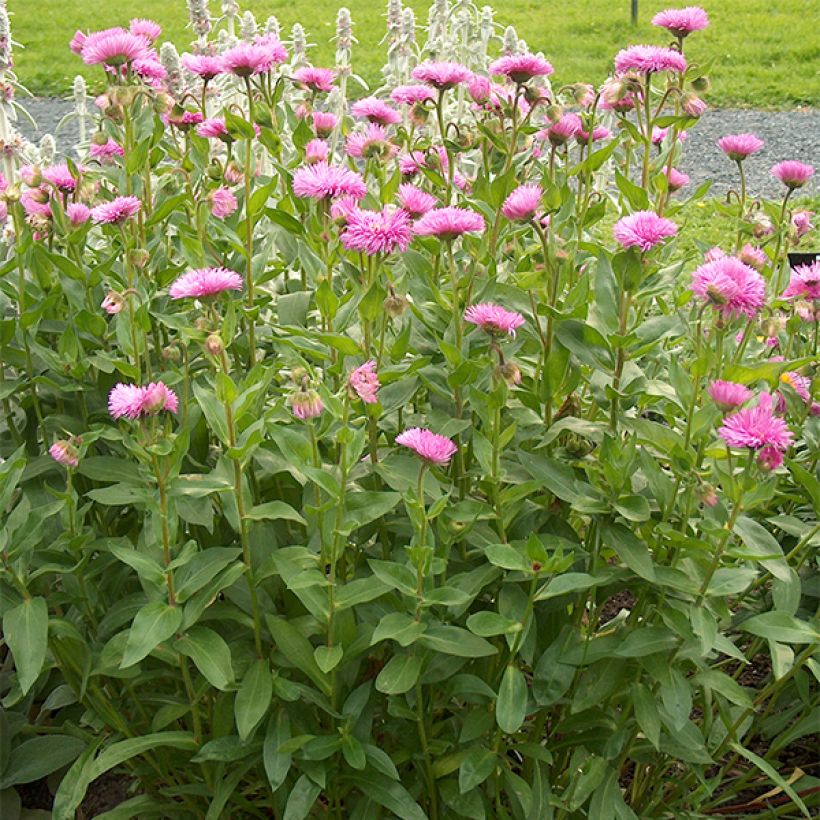

Flowering
Foliage
Plant habit
Botanical data
Erigeron
speciosus
Rosa Jewel
Asteraceae
Fleabane
Cultivar or hybrid
Other Erigeron - Fleabane
Planting and care
Plant in spring or autumn in all types of soils. However, avoid soils that tend to dry out or become waterlogged in winter. Add some gravel if the substrate is poorly drained. It will prefer a sunny exposure for a more abundant flowering.
If the development of its stump is rapid, you can divide it in autumn after the end of flowering.
Removing faded flowers during the season will promote the renewal of the following ones. At the end of the season, you can cut back the stems so that the stump regenerates. Alternatively, you can let the flowers transform into tufts that will fly away at the end of autumn.
Planting period
Intended location
Care
-
, onOrder confirmed
Reply from on Promesse de fleurs
Summer flowering perennials
Haven't found what you were looking for?
Hardiness is the lowest winter temperature a plant can endure without suffering serious damage or even dying. However, hardiness is affected by location (a sheltered area, such as a patio), protection (winter cover) and soil type (hardiness is improved by well-drained soil).

Photo Sharing Terms & Conditions
In order to encourage gardeners to interact and share their experiences, Promesse de fleurs offers various media enabling content to be uploaded onto its Site - in particular via the ‘Photo sharing’ module.
The User agrees to refrain from:
- Posting any content that is illegal, prejudicial, insulting, racist, inciteful to hatred, revisionist, contrary to public decency, that infringes on privacy or on the privacy rights of third parties, in particular the publicity rights of persons and goods, intellectual property rights, or the right to privacy.
- Submitting content on behalf of a third party;
- Impersonate the identity of a third party and/or publish any personal information about a third party;
In general, the User undertakes to refrain from any unethical behaviour.
All Content (in particular text, comments, files, images, photos, videos, creative works, etc.), which may be subject to property or intellectual property rights, image or other private rights, shall remain the property of the User, subject to the limited rights granted by the terms of the licence granted by Promesse de fleurs as stated below. Users are at liberty to publish or not to publish such Content on the Site, notably via the ‘Photo Sharing’ facility, and accept that this Content shall be made public and freely accessible, notably on the Internet.
Users further acknowledge, undertake to have ,and guarantee that they hold all necessary rights and permissions to publish such material on the Site, in particular with regard to the legislation in force pertaining to any privacy, property, intellectual property, image, or contractual rights, or rights of any other nature. By publishing such Content on the Site, Users acknowledge accepting full liability as publishers of the Content within the meaning of the law, and grant Promesse de fleurs, free of charge, an inclusive, worldwide licence for the said Content for the entire duration of its publication, including all reproduction, representation, up/downloading, displaying, performing, transmission, and storage rights.
Users also grant permission for their name to be linked to the Content and accept that this link may not always be made available.
By engaging in posting material, Users consent to their Content becoming automatically accessible on the Internet, in particular on other sites and/or blogs and/or web pages of the Promesse de fleurs site, including in particular social pages and the Promesse de fleurs catalogue.
Users may secure the removal of entrusted content free of charge by issuing a simple request via our contact form.
The flowering period indicated on our website applies to countries and regions located in USDA zone 8 (France, the United Kingdom, Ireland, the Netherlands, etc.)
It will vary according to where you live:
- In zones 9 to 10 (Italy, Spain, Greece, etc.), flowering will occur about 2 to 4 weeks earlier.
- In zones 6 to 7 (Germany, Poland, Slovenia, and lower mountainous regions), flowering will be delayed by 2 to 3 weeks.
- In zone 5 (Central Europe, Scandinavia), blooming will be delayed by 3 to 5 weeks.
In temperate climates, pruning of spring-flowering shrubs (forsythia, spireas, etc.) should be done just after flowering.
Pruning of summer-flowering shrubs (Indian Lilac, Perovskia, etc.) can be done in winter or spring.
In cold regions as well as with frost-sensitive plants, avoid pruning too early when severe frosts may still occur.
The planting period indicated on our website applies to countries and regions located in USDA zone 8 (France, United Kingdom, Ireland, Netherlands).
It will vary according to where you live:
- In Mediterranean zones (Marseille, Madrid, Milan, etc.), autumn and winter are the best planting periods.
- In continental zones (Strasbourg, Munich, Vienna, etc.), delay planting by 2 to 3 weeks in spring and bring it forward by 2 to 4 weeks in autumn.
- In mountainous regions (the Alps, Pyrenees, Carpathians, etc.), it is best to plant in late spring (May-June) or late summer (August-September).
The harvesting period indicated on our website applies to countries and regions in USDA zone 8 (France, England, Ireland, the Netherlands).
In colder areas (Scandinavia, Poland, Austria...) fruit and vegetable harvests are likely to be delayed by 3-4 weeks.
In warmer areas (Italy, Spain, Greece, etc.), harvesting will probably take place earlier, depending on weather conditions.
The sowing periods indicated on our website apply to countries and regions within USDA Zone 8 (France, UK, Ireland, Netherlands).
In colder areas (Scandinavia, Poland, Austria...), delay any outdoor sowing by 3-4 weeks, or sow under glass.
In warmer climes (Italy, Spain, Greece, etc.), bring outdoor sowing forward by a few weeks.



































